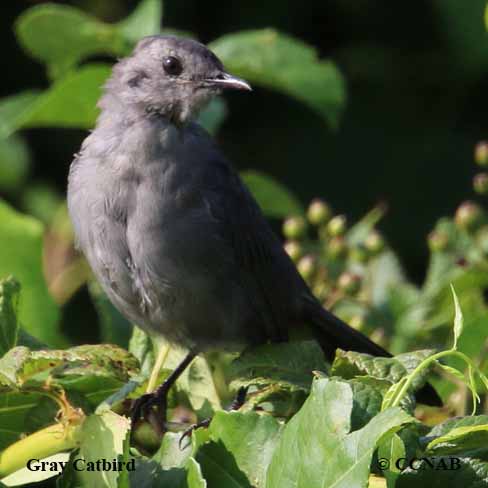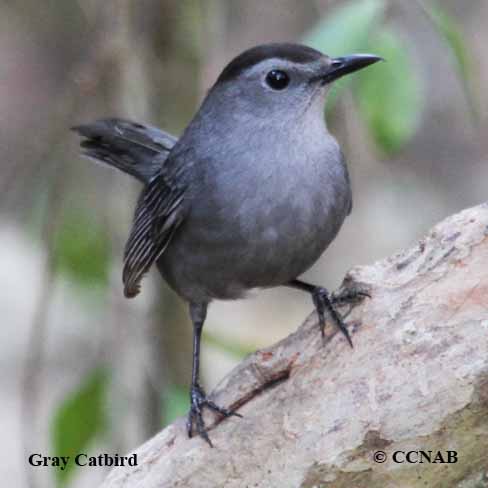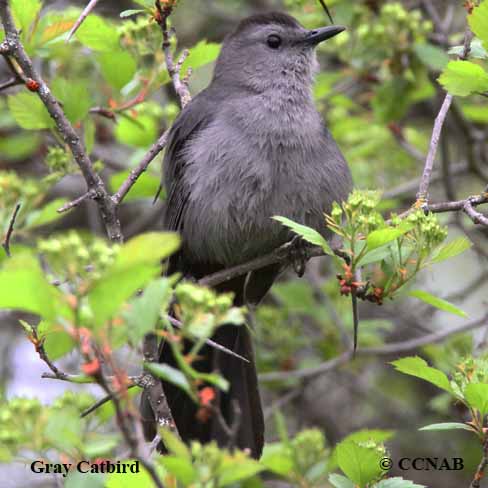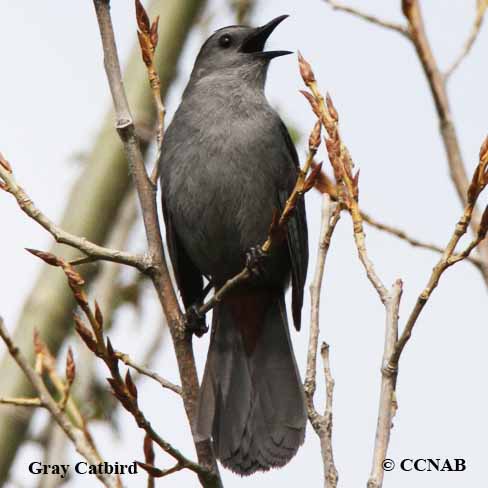Birds of Cuba, Vagrant Visitors, Introduced Birds and Possibilities
Gray Catbird
Moqueur chat
Dumetella carolinensis
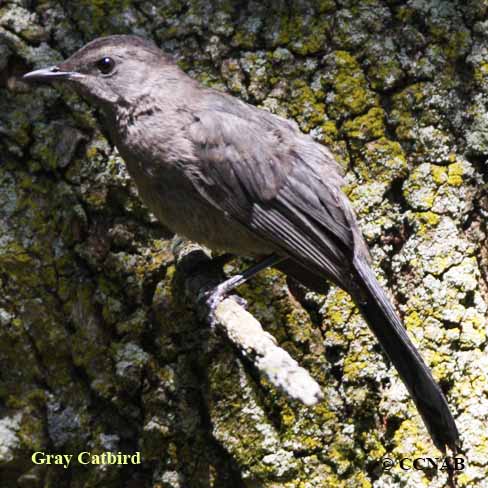
Life, Habitat & Pictures of the Gray Catbird
| B L | W W | W | Family | Latin Name |
|---|---|---|---|---|
| 8.5" 21.6cm | 11" 28cm | 1.3oz 36.9g | Mimidae | Dumetella carolinensis |
Species: The Gray Catbird (Dumetella carolinensis) is part of the same group of mimic birds as thrashers and mockingbirds. Known for its wide variety of songs, including its "mew" call. This bird is found around residential properties, where it is quite comfortable among people, and most times easy to approach.
Distinctions: The male and the female are similar in appearance. Both sexes have an all grey body, black crown, and a chestnut coloured patch in the undertail coverts. When seeking out this singing bird, it will typically move deeper into the thickets, but with patience, the catbird can be coaxed back out into the opening. It is not uncommon to see the Gray Catbird perched on a limb, with its body squat and flattened, with ruffled feathers all the while warming itself in the sun.
Voice: Has a large repertoire, from flute-like notes, to scratchy notes, with the odd "mew" thrown in, to mimicking a sound the bird has heard.
Nesting: Four to five blueish-green coloured eggs, as many as two broods per year. Builds its nest in thick bush or tangles, usually in a few feet from the base of a small tree.
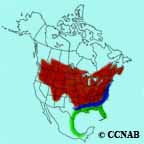
Distribution: Found throughout areas with thickets or brambles, comfortable in residential areas. Seen from Nova Scotia to British Columbia, down into New Mexico and across to Florida. May spend the winter months in southern Florida, Louisiana, eastern Texas, and into Mexico. It has been reported seen in Cuba.
